Senior Lecturer in Creative Writing, Dr Delia Falconer, tells the enthralling history of the UTS Writers' Anthology so far.

Watch the celebratory video
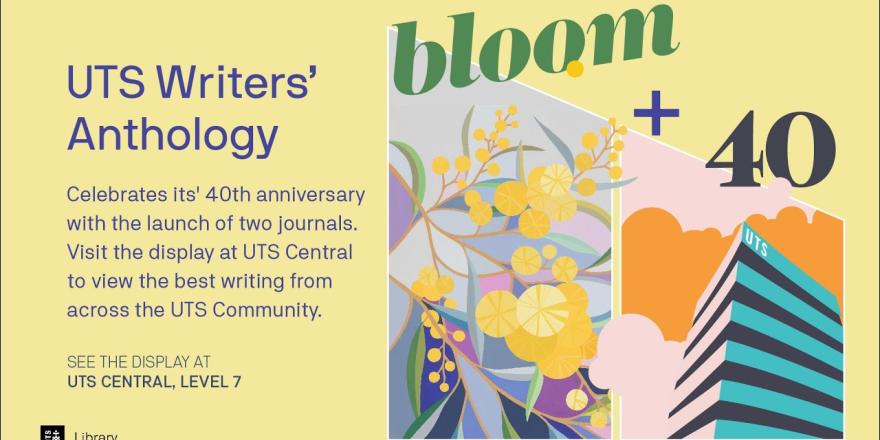
uh as far as i recall i think we were
talking about the
the process and and the difficulties of
getting published and drusilla majestic
came up with the idea of an anthology
because she thought it would also be
good training in in editing and looking
at other people's work um critically
[Music]
they choose the content
and that content is chosen without
knowing the names of any of the
any of the contributors from
from a year's worth of work that
students submit they make all the
editorial decisions they come up with
the title of the journal they talk about
covers with the designers
they
edit the work and then they're
responsible for the launch um and or
multiple launches sometimes it's they're
really responsible for the full process
[Music]
it was definitely more than i expected
it's not just being an editor in the
committee it's also
taking on marketing taking on social
media pr
um and working kind of throughout the
whole year throughout the publishing
process it was it was so fascinating to
see the breadth of talent that uts has
and that's available for uts students
and it was just absolutely fantastic to
be able to read all of that and see that
yeah it was so exciting to
find out that the work was was accepted
i feel like with writing
a lot of the time you're kind of writing
something by yourself in your room often
not that many people read what you've
written so the fact that i'd written
these stories that were going to be
published in a book was very exciting um
yeah i can't wait to for it to come out
i do remember one
memorable launch it was this
one actually i think
what you do and don't want
one of the students who published a
piece sam twyford moore
had written a piece that referenced the
author frank morehouse so i invited
frank morehouse if he to see if he'd
come and launch it and thinking he
absolutely wouldn't but he did
oh my god
oh
i thought this was only going to be
electronic
oh my god
oh present thank you oh wow
i ran riding workshops out at
eastwood
public school
and
a student enrolled in
year four i think
uh there and continued uh studying
writing with me through to year 12
and then came here to uts and where is
she
and
in here she's late for lunch
what i'm seeing is
that
i am among
friends
in in this one i feel connected with
both of these
thank you the uts writers anthology
continues to be one of the most exciting
public displays of the outstanding
student works that emerge from faster's
world-class writing program and i'm
immensely proud to be here to witness
the celebration of its 40-year history
[Music]
Pink Cakes: the first issue
The standard of writing here is very high.
– Kerryn Goldsworthy, The Sydney Morning Herald

The anthology’s first issue, Pink Cakes, appeared in 1982, when the University of Technology Sydney was still the NSW Institute of Technology. Distributed and reviewed nationally, it has appeared almost every year since, with a few small gaps, and has established itself, as a critic wrote in The Australian, as “an integral part of our literary ecology.” Here you will find just a fraction of the exciting, gritty, fanciful, funny, passionate, and often brilliant, writing that has come out of the Creative Writing area of UTS over the last four decades.
From the beginning, the journal prided itself on innovation and on the flow between academic and creative work. The first issue, its editors wrote, also came out of “a reluctance to accept the bleak situation of fiction publishing”, with its small markets, high costs, and the domination by international companies unwilling to gamble with new and untried writers. They noted the “satisfaction of controlling all the decisions that are made in every phase of production, right down to the type-face.” While the fortunes of Australian publishing have risen and fallen over the decades, these satisfactions continue for our editors, who each year judge work submitted anonymously and take responsibility for all aspects of production, including publicity and launches.
Writers in the Park
One of the virtues of a journal like this —the equivalent of an artistic group show — is that 'we have a stake in the text as it proceeds'.
– Geordie Williamson, The Australian
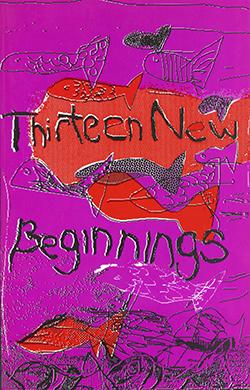
The UTS Writers’ Anthology played its part in creating big changes to the local and national writing scene. Editors of early volumes helped establish the legendary Writers in the Park, a platform for live readings at the Harold Park Hotel in Glebe that predates even the Sydney Writers’ Festival, which didn’t begin until 1997, and the many other opportunities for writers to meet readers that are now a fixture of the Australian writing calendar. From the earliest days its loyalties pointed towards the new and iconoclastic, while it empowered writers to challenge a national writing culture still mired in a parochial realism.
In his introduction to the 1987 issue, Thirteen New Beginnings, creative writing lecturer Stephen Muecke observed that there were two paths available to local writers: to study literature at Sydney University and publish with venerable houses like Angus and Robertson, or to read work at the Harold Park Hotel, in the spirit of the Balmain Push. “Collectives are slow and require compromise,” wrote the editors of Live from the War Zone (1984), “but they do ensure variety.” For volunteer editors this wasn’t always an easy, or uncontentious, process. “Oh, ambitions, idealism,” the same editorial collective wrote, “why is it that Virginia Woolf had Hogarth Press in her basement and that we, fifty years later, can’t find the time or money to turn the handle?”
Big "theory" moment
An integral aspect of our literary landscape.
– Hugo Browne-Anderson, The Australian
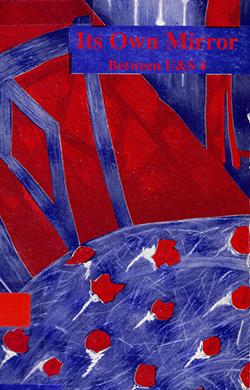
To read back through the Anthology’s thirty-four issues is fascinating. In its early editions—and especially in the eighties when Sydney was having its big “theory” moment, with visits from international luminaries like Jean Baudrillard — postmodernism inflects the writing. Authors frequently dispense with capital letters and other conventional punctuation. A self-consciousness about the history and form of stories and what it means to tell them becomes a part of many of the works included. It’s exciting to watch contributors discovering the power of recasting myths and other shared stories from a contemporary perspective.
In Beth Yahp’s “Goblin,” included here from Thirteen New Beginnings (1987), you can see her already stoking the fires of The Crocodile Fury, which would set loose the old ghosts on the colonial history of Malaysia and win the 1992 Victorian Premier’s Prize for First Fiction. So many of these stories also crackle with a feminist consciousness, homing in on women’s experiences from birth to small acts like fitting a diaphragm. Others follow the international trend of highly “voiced” storytelling, spinning into glorious monologues and refrains. By 1991, UTS creative writing graduate Gillian Mears would note in her introduction to Its Own Mirror, that “what also seems remarkable, is the willingness of these writers to leapfrog over many of the normal literary conventions. Some put a few double twists into their leap”.
A sequence of time capsules
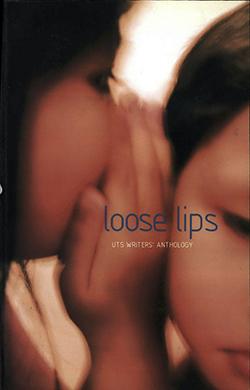
Reading the stories from 35 issues is like opening a sequence of time capsules, from which the compressed atmosphere of a time and place bursts back out. Heroin washes through those eighties and nineties stories. So do beer, Seaview champagne, inner city doorsteps, wicker chairs in share houses, and cigarette butts in the monstera deliciosa. Ecommerce and emails appear for the first time in 2004, along with designer underwear and emails; veganism in 2005. (How things change. In a story published in 2000, someone asks for a double decaf soy latte in a cafe — and the waiter says certainly not.)
The compass of the early stories, especially those about war or migration, points to Europe. Around the turn of the millennium, you can watch it swing closer to home, as pieces begin to be set in South America, Vietnam, Japan, the Pacific Islands, India, South Africa, and East Timor, as Australia itself becomes more open and dynamic. Sometimes, those earlier stories do things that we would not do today so blithely, like imagining themselves into the minds of the neurodivergent or the experience of other cultures. Nonfiction puts in sporadic and timid appearances over the first few decades, only coming into its own as a regular feature of the Anthology around 2013 (The Evening Lands), as creative nonfiction starts to boom around the world.
Writers of their times
Writing and reading are so essentially private, there is a place… for celebration and community.
- Nam Lee, introduction to I Can See my House from Here
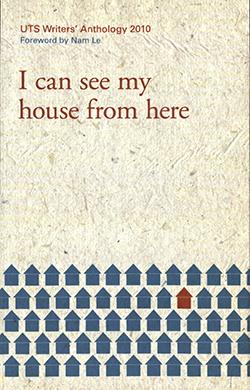
Of course, one can also see in orbit around each anthology the writers of their times, with whom the stories are in conversation. The late poet Dorothy Porter, in the slippery, sexy, queer writing of the eighties; Jeanette Winterson, in those highly voiced, incantatory pieces; and, later, in stories of humorously observed, near-present dystopias, the influence of George Saunders. There are many more I’ve missed, I’m sure, who weren’t in my own personal pantheon. Then there are the stories, like “A Drover’s Wife,” included in this collection from Good Time, Great Place (1992), which are in direct conversation with a literary tradition — in this instance, both Henry Lawson’s iconic story of the bush and a long-running history of appropriations of his story by writers including Frank Moorhouse, Mandy Sayer, and Leah Purcell — and which draw on all the reserves of confidence and brio a university-based writing degree offers. By 2011, when New Yorker managing editor Alison Lester provided the introduction to The Life You Chose and that Chose You, the included fiction starts to show the influence of an American style of sophisticated flatness and understatement.
But not all creative writing students are blessed with confidence. And although the alumni of the Anthology are impressive — including Patti Miller, Bernard Cohen, MTC Cronin, Sam Twyford-Moore, Isabel Li, and Alison Whittaker, whose work is included in this Anthology — instant success isn’t guaranteed, by course or publication. “When I was a student in the early eighties at UTS, I lived my life on the edge of fright,” confessed 1990 Vogel Award winner Gillian Mears, who had been invited back to contribute an Introduction to In Its Own Mirror (1991). “Many fears ruled me, I would ponder, hiding in the Disabled Toilets from the rest of my class during coffee breaks. Perhaps my most abiding apprehension grew out of the sense of writing talent all around; and correspondingly, of drowning beneath that quality; of never surfacing; of lingering too long in that comfortable but ultimately frustrating cocoon of the Potential Writer”. Mears would only publish fiction in the Anthology (“Midnight Shift”, included here) when she was invited to contribute to The Thirteenth Floor (2000), which featured the writing of successful graduates alongside that of students. But the point of the UTS Writers’ Anthology has always been about something bigger. As Nam Le would point out in his Introduction to I Can See my House from Here (2010), “[w]riting and reading are so essentially private, there is a place… for celebration and community”.
Nurturing spaces
Testament to the teaching at UTS is the willingness and ability of all these writers to apply themselves to such a variety of form and voice, as well as the fact that the writing is not blurred with polish into sameness, genericised by an overemphasis on craft.
– Fiona McGregor, introduction to Hide Your Fires
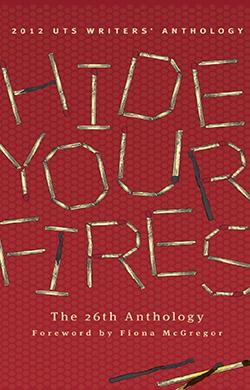
Over the years a spectacular range of writers have been happy to endorse the UTS Writers’ Anthology, which includes introductions by Kate Grenville, Malcolm Knox, James Bradley, Anna Funder, and, this year, Miles Franklin award-winner Melissa Lucashenko. While all acknowledge the vivid talents on display, one theme rings loudly: the importance of such courses and anthologies as nurturing spaces for writers. In her Introduction to Fibs and Fallen Angels (1994), Jan Hutchinson would note that “[w]hen I was first a bewildered writing student at UTS, I was struck, and still am, by the care that is shown towards new writers and their writing. It’s a consideration that exists outside preciousness, and yet within the confines of something almost as old-fashioned as respect”. In her Introduction to Hide Your Fires (2012), Fiona McGregor could still write that it was “testament to the teaching at UTS is the willingness and ability of all these writers to apply themselves to such a variety of form and voice, as well as the fact that the writing is not blurred with polish into sameness, genericised by an overemphasis on craft.”
As part of the program for sixteen years now, I can only add that this has been my experience too, of endless delight and surprise at the inventiveness, good will, and bravery of the writers I have worked with — who, no matter what they have gone on to do after UTS, have left with a sense of the importance of creative communities and their own powers of invention. The Anthology remains as we all pass through. Thank you to our wonderful volunteer editors for your hard work and dedication. Here’s to the next 40 years.
Dr Delia Falconer is an award-winning writer of fiction and non-fiction, and Senior Lecturer in Creative Writing at UTS.
This text is taken from the Introduction to 40: Forty Years of the UTS Writers' Anthology.

